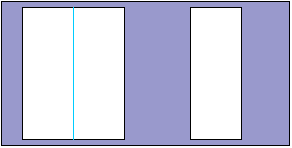
Fold an 8 1/2 x 11 sheet of paper down the middle of the 11" dimension. Don't panic. Just look at the pictures. On the left I'll show you what you're starting with, and I'll mark (in blue) where you're going to fold. On the right you'll see what you should end up with after each step.

Next fold the two upper corners in at a 45-degree angle. Be careful here to line these up, and do not let the flaps cross the middle of the paper. Use the middle fold as a guide.
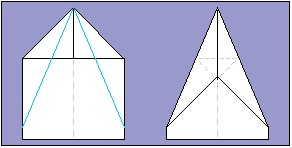
Fold each side, again using the middle as a guide. The two sides must be very even. These folds are the most critical for proper flight. Don't crease these too hard, that creates a sharp edge and reduces the lift. (The plane will nose dive) If you leave these folds too rounded, the plane will tend to rise into a stall. When you get into flight testing, you can adjust the plane my messing with the sharpness of these folds.
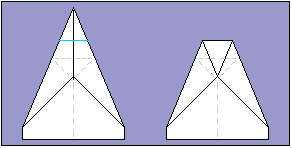
Fold the tip over, lining the pointy tip up with where the other folds meet in the middle. This provides both the proper center of gravity, and it makes the nose blunt so you won't poke your eye out.
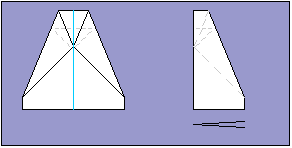
Fold the plane down the middle and press it flat.
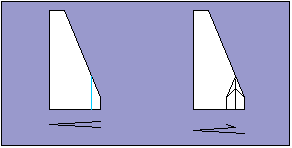
Next we're going to fold a winglet. The fold should be parallel to the edge of the paper, and about 3/4 of an inch (19MM) from the ends of the wings. The little squiggles under the drawing show you how it would look if you held it up and looked at it from the back of the plane.
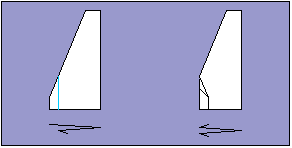
Flip the plane over and fold the other winglet, using the first as a guide. Get them both very even with each other.
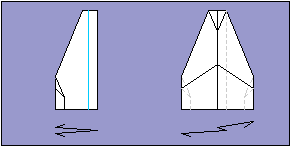
Next we're going to make the fuselage or "body" of the plane. I usually fold the wing over to split the blunt end evenly, so that half ends up on the body, and half on the wing. Again the fold should be parallel to the paper.

Flip it over and fold the other wing to create the completed fuselage. I usually run my thumbnail along all of the fuselage folds here to really crease the edges. Remember, DO NOT crease the leading edges of the wings too much, see step 3 for instructions.

Almost done. Unfold the wings and winglets and work them until you get the shape you see on the right. There should be a very pronounced "V" shape in the wings, and the winglets should be at about a 90-degree angle to the wings. Now give it a gentle toss. Have fun.
This Paper Airplane is the result of years of childhood research, design and testing.
Its unique design is resistant to stalling, and it flies very nicely with just a gentle toss. It can also take a strong arm toss, and with all the layers of paper that make up the nose, I've had good luck cutting a small notch in the belly near the nose to take a rubber band. (I like tying 3 or 4 bands together and locking them in the notch of a dowel to make a launching "slingshot" rod. As a kid I used to launch them that way over the trees in our yard. (But that was long before video games as we know them today)
October 29, 1998:
This page and all images on it are copyright © 1998 - 2000, Joseph Palmer. All Right Reserved.
Permission to link this page from your page is hereby granted under the following conditions:
a) This information is presented under non-profit conditions. Sub framing this page from
a page that contains commercial advertising for any service or product is strictly forbidden.
If you have advertisements on your page, you may provide either a direct link (No frames),
or open this page in a new browser window.
b) Sub framing from non-commercial bearing sites is allowed, but strongly discouraged. (Yech.)
c) Ordinary linking is encouraged, and yes, these are really fun airplanes. Please give them a try!
Go ahead, don't be shy, please sign my Paper Airplane Guestbook [an error occurred while processing this directive]